
It was a Great, Green Year: Identification of a Chlorophyll Dephytylase That Functions in Chlorophyll Turnover
Research, The Plant Cell, The Plant Cell: In Brief0 Comments
/
IN BRIEF by Jennifer Mach [email protected]
Green may have been the Pantone Color of the Year for 2013 (http://www.pantone.com/color-of-the-year-2013), but 2016 was a great year for papers on chlorophyll research, at The Plant Cell and beyond. In this year, we saw a pile of interesting papers examining…

The Power of Plasticity in Polyploid Persimmon
Research, The Plant Cell, The Plant Cell: In BriefIN BRIEF by Jennifer Lockhart [email protected]
Most plants are hermaphrodites, producing perfect flowers with both male and female functions. In roughly 6% of plants, however, male (usually XY) plants produce only male flowers and female (XX) plants produce only female flowers. These dioecious plants…
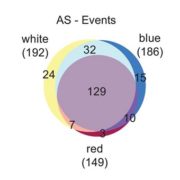
Metabolic Signaling Regulates Alternative Splicing during Photomorphogenesis
Research, The Plant Cell, The Plant Cell: In BriefIN BRIEF by Kathleen L. Farquharson [email protected]
Alternative splicing (AS) regulates gene expression and greatly expands the coding capacity of complex genomes. By regulating which elements of an mRNA transcript are removed or retained, AS produces multiple transcripts from a single gene. Some…
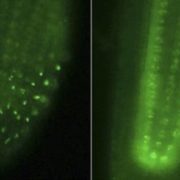
Do Phytochromes and Phytochrome-Interacting Factors Need to Interact?
Research, The Plant Cell, The Plant Cell: In BriefIN BRIEF by Nancy R. Hofmann [email protected]
A new study calls into question whether phytochrome B (phyB) must directly interact with phytochrome-interacting factors (PIFs) to promote light responses. Phytochrome photoreceptors mediate responses to red light in part by inducing the degradation of…
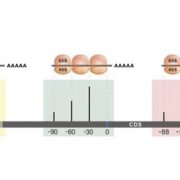
RNA Degradome Studies Give Insights into Ribosome Dynamics
Research, The Plant Cell, The Plant Cell: In BriefIN BRIEF by Gregory Bertoni [email protected]
RNA metabolism is key to a number of crucial processes in the cell, including transcription, RNA splicing, translation, and gene regulation. For efficient translation, mature mRNAs must have a 7-methylguanosine cap on the 5′ end to help recruit the translation…
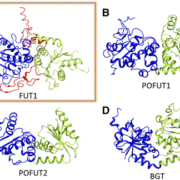
Another Step Closer to Understanding Plant Cell Wall Biosynthesis: The Crystal Structure of FUCOSYLTRANSFERASE1[
Research, The Plant Cell, The Plant Cell: In Brief
IN BRIEF by Nancy R. Hofmann [email protected]
Plant cell walls consist of cellulose microfibrils embedded in a matrix of polymers including hemicelluloses. As one of the main hemicelluloses in the cell walls of dicots, xyloglucan is an important target of study to understand plant cell walls…

It’s Not Easy Not Being Green: Breakthroughs in Chlorophyll Breakdown
Research, The Plant Cell, The Plant Cell: In Brief
IN BRIEF by Jennifer Mach [email protected]
Plants can dispose of organs such as leaves and recycle the nutrients in these organs into new leaves, seeds, or storage organs. However, when separated from its photosystem proteins, chlorophyll can be phototoxic, absorbing light and producing high-energy…
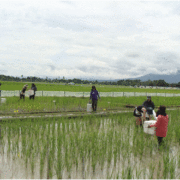
Field of Genes: Uncovering EGRINs (Environmental Gene Regulatory Influence Networks) in Rice That Function during High-Temperature and Drought Stress
Research, The Plant Cell, The Plant Cell: In BriefIN BRIEF by Jennifer Lockhart [email protected]
Heat and drought stress greatly restrict crop productivity, but most of what we know about a plant’s response to these stresses comes from controlled laboratory studies. This factor, along with the complex nature of these responses, has hampered efforts…
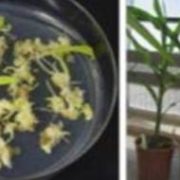
A Breakthrough in Monocot Transformation Methods
Research, The Plant Cell, The Plant Cell: In Brief
IN BRIEF by Nancy Hofmann [email protected]
The ability to generate transgenic plants without regard to cultivar or genotype can be considered a holy grail of cereal crop transformation. Despite years of effort, it has been remarkably difficult to develop efficient methods for transformation of…

